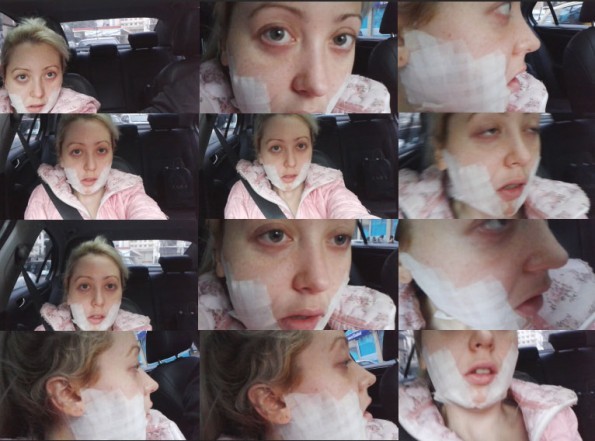We caught up with the brilliant and insightful Natacha Voliakovsky a few weeks ago and have shared our conversation below.
Natacha, appreciate you joining us today. It’s always helpful to hear about times when someone’s had to take a risk – how did they think through the decision, why did they take the risk, and what ended up happening. We’d love to hear about a risk you’ve taken.
Making socially engaged art is always a big risk. As a South American survivor and high testosterone women, making art as a form of social claim is not an easy path. My performances do not seek to be attractive, but their mission is to make visible many injustices and problems that we face today as society worldwide. I use activism-based-practice and performance pedagogy to address my work towards social-bodies. My practice develops at the intersection of queer rights, sudaca-feminism, and the recovery and occupation of our bodies as an extension of public spaces. My work is deeply related to the South American context and its diaspora’s struggle for social change.
Generally, in my actions, some people already know my work and somehow know what they are going to see. Beyond them, the average spectator is not specialized in performance art and I’m interested in reaching that audience. Many people write to me and tell me that as a result of a performance they experienced, I generated in them a question, a sensation or an impact. That is the most gratifying thing I can perceive from my doing.
This is a way of living for me. If my risks and struggles manage to open any possible questions in the viewers present, I feel that those risks are the best that I could have chosen to keep myself alive. I pretend to use embodiment to raise questions about liberating, reinventing, and reshaping our world for a better one.



Natacha, before we move on to more of these sorts of questions, can you take some time to bring our readers up to speed on you and what you do?
I’m from Buenos Aires, Argentina, a “SUDACA” as people usually call who are from South America. I develop my practice as an activist and performance artist. My work has always been close to socially relevant issues. This is part of my statement of work and research. I participated for more than 9 years in interventions and performances around the world in the
public space in marches for human rights, social justice, women’s rights, LGBTIQ+ and migrants rights. These experiences were feeding my observations and visions about collective actions. Group activities can lead to the understanding of oppressive processes over communities with vulnerabilities and how this process is reflected in different spaces (public, institutional, social, etc.).
Since my childhood I have made drawings, however this artistic language was not enough for me to express my thoughts and my feelings about everything I capture in my work. The emotional wounds, traumas and the patriarchy on my body. I found with my own body a way to transcend its own limits, so I entered in performance art. In my work I expose and transform my own body to the limit, with the aim of revealing through bio-hardcore political performance those oppressive norms of the dominant culture. I seek to question established morals and I work on issues related to gender identity and the free sovereignty of the body. I also develop part of my work with the use of other media such as photography, video, and installation. One of my objectives is to generate a dialogue with the spectator so that he/she asks his/her own questions and becomes an active subject of the action.
In addition, I created the first Argentinian digital platform specialized in performance theory, research, archive, and heritage, called Argentina Performance Art – APA in 2018. The project was declared of interest by the Legislature of the Government of the City of Buenos Aires through the Office of Cultural Patronage for its contribution to the contemporary art community. This project arose from the need for this contemporary artistic discipline to be recognized and developed in Argentina.
We’d love to hear a story of resilience from your journey.
At the beginning of my career, I didn’t know how to prepare myself to do my type of performance, since there was no training linked to the art that could help me and that frustrated me. What I needed was not in a visual arts career nor did it have to do with dance or theater. For more than eight years I have been carrying out my own training method called N.V.Method and I have students from all over the world who learn it because it is something very specifically related to endurance performance. With this method I have trained artists, specializing in both physical and mental preparation for the action of the performance. I seek to meet the need of artists in the preparation of performance art as the transmission of this practice.
I never thought that my job, in addition to being an artist, would become guiding other people who wanted to live these experiences through performance.




How can we best help foster a strong, supportive environment for artists and creatives?
I think that the best way to support artists is always by sharing, disseminating, consuming and interacting with their work. The purpose of every artist is to generate reach and value with the story. It is also important that audiences are enriched and look beyond what television programs and the mainstream have to offer and can appreciate the work behind each type of art.
Contact Info:
- Website: www.natachavoliakovsky.com
- Instagram: @natachavoliakovsky
- Facebook: @natachavoliakovsky
- Twitter: @N_Voliakovsky
Image Credits
Photos courtesy of the artist


